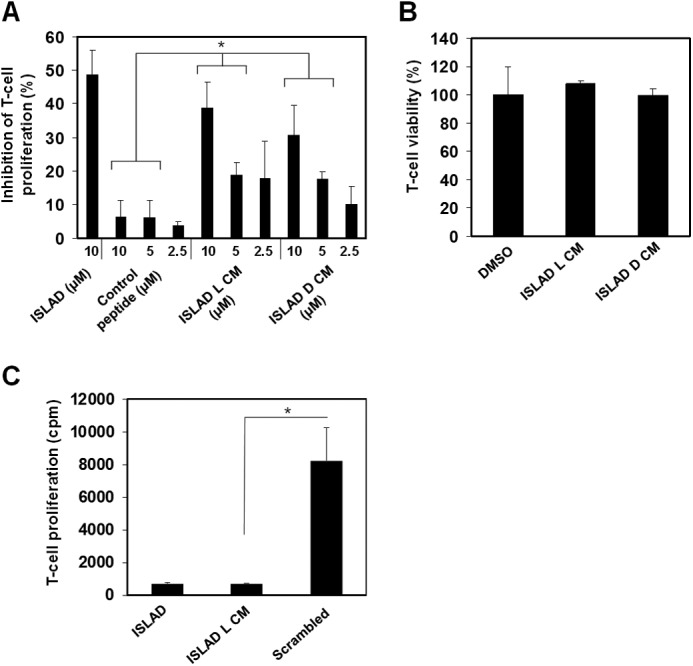FIGURE 2.

Inhibition of mMOG(35–55) T-cells by ISLAD CM and its d-enantiomer. mMOG(35–55) T-cells were cultured in microtiter plates with irradiated syngeneic splenocytes as APCs and the MOG(35–55) peptide in the presence or absence of several gp41-derived peptides. Their proliferative response was measured in a [3H]thymidine proliferation assay. A, inhibition of proliferation by ISLAD, ISLAD l-CM, ISLAD d-CM, and a control gp41-derived peptide. The results presented are the mean percent inhibition ± S.E. of the proliferative response to the MOG(35–55) peptide relative to the control (in the absence of gp41 peptides) from three experiments. B, ISLAD CM is not toxic to T-cells. mMOG(35–55) T-cells were incubated with 40 μm ISLAD l-CM and ISLAD d-CM. The viability of the cells was then analyzed by an XTT cytotoxicity assay. Results are the mean percent viability ± S.D. from the control (cells with no peptide added; n = 3). DMSO, dimethyl sulfoxide. C, the proliferative response of MOG(35–55) T-cells is higher in the presence of scrambled ISLAD l-CM. MOG(35–55) T-cells were cultured in the presence of MOG(35–55) and the gp41-derived peptides (10 μm), and proliferation was determined by [3H]thymidine uptake (cpm). The results presented are the mean cpm ± S.E. of the proliferative response. The proliferative response value without the gp41-derived peptides was 20716 cpm. *, p < 0.05 in same concentrations between groups.
